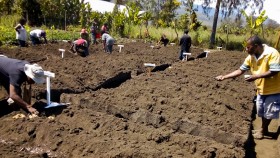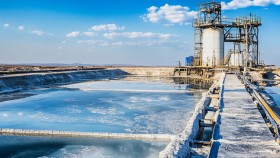Who Pays for Disasters and How? A Call for Urgent Research
As Australia faces more frequent and intense natural disasters due to climate change, a critical question emerges: who covers the growing costs of preparing for, responding to, and recovering from these events – and how? A growing percentage of the damage caused by disasters in Australia is uninsured. This problem, known as the "insurance gap," is increasing across the globe. When disasters strike, governments often must pay for rebuilding where insurance does not cover the damage.
A recent roundtable hosted by the ANU Institute for Climate, Energy & Disaster Solutions highlighted key research areas needed to address these pressing concerns:
Research Priorities:
- Future-proofing land use and building codes: Research is needed to guide changes to land use policies and building regulations, ensuring they account for climate risks. Strengthening these measures can lower recovery costs by making communities more resilient.
- Insurance as climate adaptation: We need to rethink insurance as a tool for disaster resilience. This includes creating new types of insurance products, exploring partnerships between public and private sectors, and ensuring climate change is factored into property valuations.
- Making informed decisions in uncertain times: Policymakers need tools to help balance immediate disaster response needs with long-term resilience goals. This research will develop frameworks for allocating resources and managing competing priorities.
Supporting Research:
- Integrated dynamic risk mapping: High-resolution maps showing areas at greatest risk from multiple hazards can help identify vulnerable locations. Better integration of data across sectors and over time will improve our ability to assess and respond to risks.
- Cost-benefit analysis of adaptive measures: Both public and private investment in climate resilience offer huge potential, but unlocking this opportunity requires clear quantification of benefits to attract and inform investors. Developing standard methods to measure the effectiveness and value of resilience efforts will help quantify the benefits of investing in disaster risk reduction, as well as the costs of disruptions caused by disasters.
- Governance and responsibility frameworks: As disaster risks grow, we need equitable guidelines that clarify who is responsible for funding disaster management at all levels of government and across different sectors.
The stakes are too high to ignore. By investing in research now, we can develop fair and sustainable ways to finance disaster preparedness, response, and recovery. One of the best ways to reduce recovery costs and close the insurance gap is by finding effective methods to minimise disaster impacts in the first place, leaving less damage to pay for. Read the full report to learn how we can protect Australia’s financial future in a changing climate.
The ANU Disaster Finance and Insurance Research Roundtable was held on Tuesday 6 August 2024 with generous support from Natural Hazards Research Australia.











